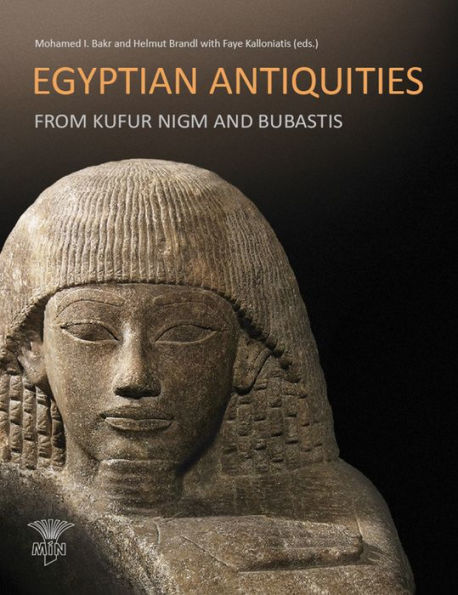Egyptian Antiquities from Kufur Nigm and Bubastis
This volume introduces the reader to the archaeology and history of two ancient sites in the Eastern Nile Delta: Kufur Nigm and Bubastis (Tell Basta). The finds from Kufur Nigm originate from the Early Dynastic Period (around 3000 BC) and add to our understanding of the religious thought and funerary culture which existed at the beginning of the ancient Egyptian Dynastic period. Bubastis is one of the most significant ancient sites of Egypt. The local necropolises of the Old and New Kingdom together with the temple of the lion-headed goddess, Bastet, of the Libyan Period (10th/9th century BC), are even today productive find spots. Of exceptional importance is a hoard find (1992) from the area of the Bastet temple; it is presented and discussed here for the first time. The objects, many of them without parallels, are currently exhibited in temporary galleries at the University of Zagazig. They are illustrated here with fine photographs. Previously unpublished excavation photographs, line drawings and maps enhance the documentation. The artefacts were excavated under the leadership of Mohamed I. Bakr, formerly President of the Egyptian Antiquities Organisation (EAO). At Bubastis German archaeologists (from the Academy of Sciences of the GDR, Humboldt University, and the University of Potsdam) also participated in these excavations. Museums in the Nile Delta (M.i.N.) is a scientific documentation and research project which is affiliated with the Institute of Archaeology at the Humboldt University, Berlin, Department of Egyptology and Cultural History of North-east Africa. A large number of the objects which are included in this publication are illustrated for the first time.
1120311157
Egyptian Antiquities from Kufur Nigm and Bubastis
This volume introduces the reader to the archaeology and history of two ancient sites in the Eastern Nile Delta: Kufur Nigm and Bubastis (Tell Basta). The finds from Kufur Nigm originate from the Early Dynastic Period (around 3000 BC) and add to our understanding of the religious thought and funerary culture which existed at the beginning of the ancient Egyptian Dynastic period. Bubastis is one of the most significant ancient sites of Egypt. The local necropolises of the Old and New Kingdom together with the temple of the lion-headed goddess, Bastet, of the Libyan Period (10th/9th century BC), are even today productive find spots. Of exceptional importance is a hoard find (1992) from the area of the Bastet temple; it is presented and discussed here for the first time. The objects, many of them without parallels, are currently exhibited in temporary galleries at the University of Zagazig. They are illustrated here with fine photographs. Previously unpublished excavation photographs, line drawings and maps enhance the documentation. The artefacts were excavated under the leadership of Mohamed I. Bakr, formerly President of the Egyptian Antiquities Organisation (EAO). At Bubastis German archaeologists (from the Academy of Sciences of the GDR, Humboldt University, and the University of Potsdam) also participated in these excavations. Museums in the Nile Delta (M.i.N.) is a scientific documentation and research project which is affiliated with the Institute of Archaeology at the Humboldt University, Berlin, Department of Egyptology and Cultural History of North-east Africa. A large number of the objects which are included in this publication are illustrated for the first time.
30.0
Out Of Stock
5
1

Egyptian Antiquities from Kufur Nigm and Bubastis
296
Egyptian Antiquities from Kufur Nigm and Bubastis
296
30.0
Out Of Stock

Product Details
| ISBN-13: | 9783000335099 |
|---|---|
| Publisher: | Museums in the Nile Delta |
| Publication date: | 12/31/2010 |
| Series: | Museums in the Nile Delta , #1 |
| Edition description: | Bilingual |
| Pages: | 296 |
| Product dimensions: | 7.50(w) x 9.80(h) x 0.80(d) |
| Language: | Arabic |
From the B&N Reads Blog
